US election 2020: Trump closing in on Biden in home straight
The battle between Trump and Biden is not just holding the US in thrall, it is spooking the country.
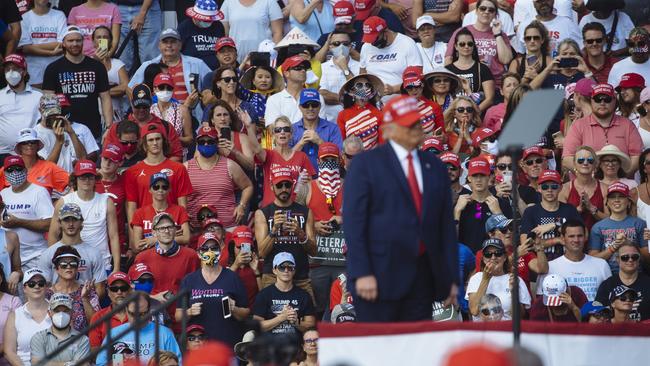
The contest between Donald Trump and Joe Biden is not just holding the US in thrall, it is spooking the country. Fears of a contested result in Wednesday’s election (AEDT) and resulting civil unrest has seen shopfronts in Washington and other cities boarded up, the national guard placed on standby and a spike in gun sales.
Such is the passion for this contest that long lines of people are waiting for hours at voting booths across the country to cast their vote days ahead of the actual poll. An unprecedented 75 million voters have already voted by mail or in person, more than half of the total vote in the 2016 election. This is avery willing fight between two starkly different visions of America.
It comes at a time when Trump has regained his mojo on the campaign trail after battling COVID-19. He is barnstorming America, holding up to three rallies a day to recreate his “Red Wave” while striking fear into Democrats who dread a repeat of his come-from-behind victory in 2016.
Despite Trump enjoying late momentum, Biden remains the clear favourite to be elected as the next US president. The 77-year-old former vice president is 7.7 points up nationally and leads by an average of 3.5 points in the key battleground states which will decide the election. In the states that Trump must win, Pennsylvania and Florida, Biden leads by 4.3 points and 1.4 points respectively.
Polls also suggest that the Democrats are favourites to win control of the Senate, which Republicans now hold 53-47. The Democrats have to flip just three seats if Biden wins and four if he loses. The Senate is not a side-show, it would have huge implications for Biden’s ability as president to push through his agenda and unwind Trump’s legacy. The Democrats are expected to increase their majority in the House also.
Trump is closing the gap on Biden but only gradually. On October 13, Biden was winning by 10 points nationally, compared to 7.7 points now. Biden’s lead in the battleground states has also shrunk in that same period from 5 points to 3.5.
If you believe the polls, Trump’s comeback looks to be too little too late. At this stage of the race in 2016, Hillary Clinton was just 1.3 points ahead nationally and 1.6 points ahead in the battleground states where she unexpectedly lost Pennsylvania, Michigan and Wisconsin, delivering the White House to Trump.
But the Democrats, after fatally misjudging Trump in 2016 are wary of doing so again. The Biden campaign believes it will win but it is also haunted by unknowns. Could the polls be wrong again, like they were in 2016? Is Trump right when he says there is a hidden army of supporters, a “silent majority”, which will emerge to vote for him? Because of the almost mythical reputation Trump enjoys from his unlikely 2016 triumph, almost no-one in Washington completely rules out another Trump victory next week.
As the campaign nears its climax, both Trump and Biden are taking increasingly wild swings at each other. Trump has labelled Biden a “criminal” politician who should be jailed for his family’s business dealings. Biden has all but blamed Trump for the deaths of 227,000 Americans due to the coronavirus pandemic. Supporters of both candidates are treating this election as if it will change America forever.
“I’ve never seen anything like it,” veteran Republican political consultant Frank Luntz says. “Even the most balanced, mainstream people are talking about this election in language that is more caffeinated and cataclysmic than anything I‘ve ever heard.
“If you are a believer in climate change, re-electing Trump is literally the end of the world. If taxes are your issue, you think a Biden victory will bankrupt you. If your top concern is health care, you think a Biden loss will kill you.”
At his rallies Trump tells his supporters he should never have been fighting for his political life right now.
“We had this thing won. We were so far up. We had the greatest economy ever, greatest jobs, greatest everything. And then we got hit with the plague, and I had to go back to work,” he says.
Indeed, the President looked like he was cruising towards a second term in office when the coronavirus shut down the country and the world’s richest economy in March. For all the controversy Trump generates, the US economy was purring along with 50-year low unemployment, plentiful jobs and rising wages. History shows that Americans re-elect presidents on that record.
But Trump has been forced to fight this election in the giant shadow of the coronavirus pandemic and the fatal perception among a majority of voters that he has mishandled the tragedy. The pandemic has also plunged the US economy into recession, causing tens of millions of job losses, robbing Trump of his biggest argument for re-election.
Trump’s advisers are cautiously hopeful that the President can pull off a historic victory now that he has finally hit his stride. They say Friday’s figures showing a record 33 per cent surge in GDP in the third quarter will help persuade voters that he is the best choice to manage the economic recovery.
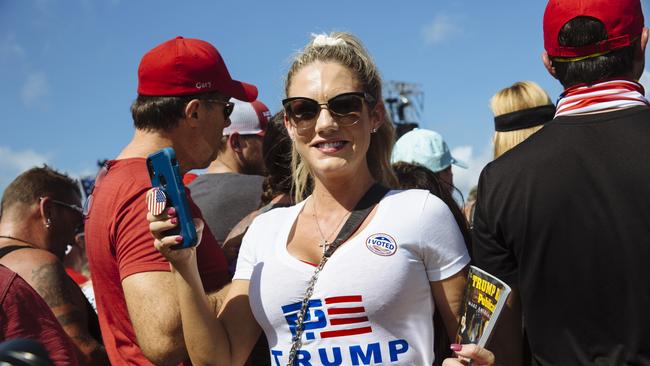
Yet Trump has fought a less disciplined and more uneven campaign than Biden.
After a strong speech at the Republican Convention, Trump misjudged the first presidential debate with an overly-aggressive performance that saw him punished in the polls.
When Trump caught and then recovered quickly from COVID-19, he angered many Americans by downplaying the virus and telling them not to let it dominate their lives.
His advisers have struggled to keep Trump focused on talking about his strengths, such as managing the economy. Often he has veered off the script picking unnecessary fights with people like infectious diseases expert Anthony Fauci rather than sticking to the issues that matter to voters.
It is only since his improved performance in the second presidential debate last week that Trump has campaigned in a disciplined manner, pushing his key themes of the economy, law and order, immigration and the dangers posed by Biden’s tax and spend agenda.
Trump has also benefited from the rushed but timely confirmation to the Supreme Court of conservative judge Amy Coney Barrett, a move which has been loudly welcomed by his base.
But Trump’s final sprint to the poll has coincided with a record surge in new coronavirus cases across the country. These have doubled to around 80,000 a day from 35,000 in mid-September. Unfortunately for Trump, this surge has been greatest in key swing states like Wisconsin and Iowa which he needs to win.
Boxed in by the virus, Trump has tried to politicise the pandemic, blaming “fake news” for concentrating on the issue for political reasons.
“Covid, Covid, Covid is the universal chant of the Fake News Lamestream Media,” he tweeted. At his rallies he plays down the virus, making the claim that “we’re rounding the turn”. “Normal life will fully resume, that’s what we want right?”
Trump has also campaigned hard on the issue of Hunter Biden’s laptop, a strategy that has divided Republicans. The murky story, about emails from the laptop of Biden’s son, suggest that Biden may have discussed his son’s business interests in Ukraine and China, contrary to his claim that he never did. It does not offer proof of any wrongdoing by Biden, but does raise questions about whether Biden has been fully transparent.
The story has been obsessed over by the conservative US media and mostly ignored by the mainstream media. Trump talks about it at every rally, but it is unclear how much traction, if any, it is getting beyond his base.
Republican Senator Ted Cruz says Trump is wasting his time pushing the issue. “I don’t think it moves a single voter,’ Cruz says.
As the campaign nears its conclusion, the Trump team has changed its advertising focus from Trump’s achievements to a fear campaign, warning that a Biden presidency would lead to higher taxes, fewer jobs and a socialist agenda.
Biden’s campaign has been the polar opposite of Trump’s brash big-rally, big-crowd, cross country extravaganza. Biden says he has chosen his low profile campaign, which consists of limited events attended by little more than a handful of people, because he is showing responsibility in the midst of a pandemic.
“I don’t like the idea of all this distance,” he says. “What we don’t want to do is become super spreaders. It’s important to be responsible.”
But the Biden campaign is also taking this low-risk because they believe that they can. He holds a likely election winning lead in the polls and the strategy means the 77-year-old is less likely to deliver an election-changing gaffe.
This strategy has infuriated Trump who constantly calls on Biden to “come out of his basement”. But is it also a historic gamble by the Biden team. It is unheard of for a presidential candidate in the last week of a campaign to hold only a handful of events rather than crisscrossing the country in a blaze of publicity.
What’s more, this week Biden campaigned in Georgia and in Iowa — two reliably Republican states. This suggests that the Biden team is confident they can win these states and are therefore looking at a potential landslide win rather than a scrappy close victory.
If Biden loses, there will be hell to pay in Democratic headquarters for choosing to shield him from Americans and also for campaigning in non-essential states in the final days.
For the most part Biden’s campaign has been disciplined. It has focused heavily on Trump’s mismanagement of the pandemic and his push to scrap Obamacare, which would leave some 20 million Americans without health insurance.
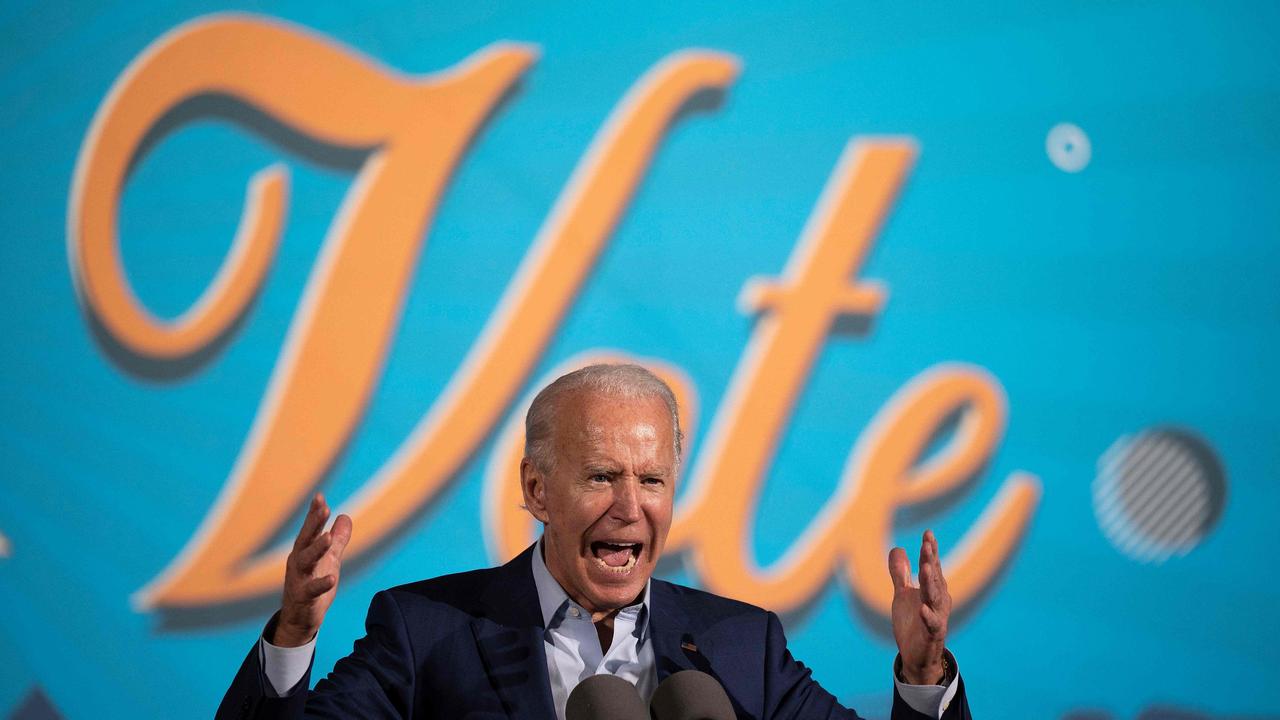
At every turn, Biden has tried to highlight the human and economic cost of the virus, accusing Trump of failing to show leadership when the country most needed it.
“The refusal of the Trump Administration to recognise the reality we’re living through at a time when almost 1000 Americans are dying every single day is an insult to every single person suffering from COVID-19, and to every family who has lost a loved one,” he says.
Biden has managed to largely bring the restless left wing of his party into line during the campaign. The left, which believes that Biden is too moderate on a range of issues, has bitten its tongue and swung in behind him if only because Trump is a worse alternative.
Biden also performed above expectations in the two presidential debates. But his campaign has not been trouble-free. In the second debate, Biden said bluntly that he would “transition” away from the oil industry in favour of renewable energy. The Biden campaign later claimed he was talking about phasing out taxpayer subsidies for fossil fuel companies, not the industry altogether, but the damage was done.
Trump has attacked Biden relentlessly on this issue, saying it will cost tens of thousands of jobs in the oil rich swing states like Pennsylvania and Ohio. Trump’s attacks during the campaign have also put Biden on the defensive on a range of issues, forcing him to deny that he would raise middle class taxes, end fracking or shutdown the economy to fight the virus.
With just days to go, the Trump campaign is trying to work out the narrow path it needs to claim a surprise victory.
It is almost impossible for Trump to win the election without winning the large states Florida and Pennsylvania, both of which he won by a narrow margin in 2016.
In Florida, Trump has been hit by a drop in support from older voters. These voters have been hit hardest by the pandemic and are less inclined to back his push to prioritise the economy over fighting the virus. But despite this, it is a virtual tie in Florida with Biden up by a mere 1.4 points.
Pennsylvania is a tougher challenge for Trump but he is still within reach given Biden’s lead of 4.3 points. Trump did three rallies in the state in one day this week, campaigning hard on Biden’s comments about the oil industry.
The greatest worry for the Trump campaign is Michigan and Wisconsin, the two states that Trump won unexpectedly in 2016. Both have been hit hard by the pandemic and both look increasingly out of reach, with Biden leading by 8.2 points in Michigan and 6.4 points in Wisconsin.
If Trump loses these two states he must pick up states that Clinton won in 2016 such as Nevada where Biden leads by 4.6 or Minnesota where Biden leads by 4.7. In addition Trump must win all of the other states he won in 2016. This might not be so easy. Trump is currently trailing by 0.7 points in North Carolina and 1.4 points in Iowa. Trump is level with Biden in Georgia and Arizona only 0.6 points up in Ohio and 2.6 points up in deep red Texas.
In other words, Trump needs to weave an almost perfect path through numerous states if he is to win this election.
It is not impossible, but the President is relying on the polls being inaccurate and also a large dose of luck. If Trump is to prove the pundits wrong for the second time in four years, he needs history to repeat itself and then some.Otherwise America’s 46th president will be Joe Biden.
Cameron Stewart is also US Contributor for Sky News Australia.


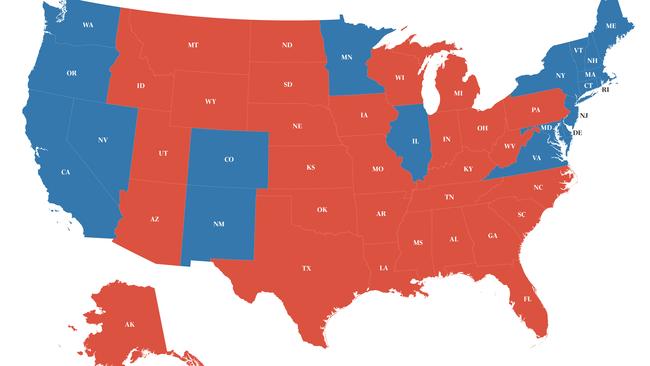
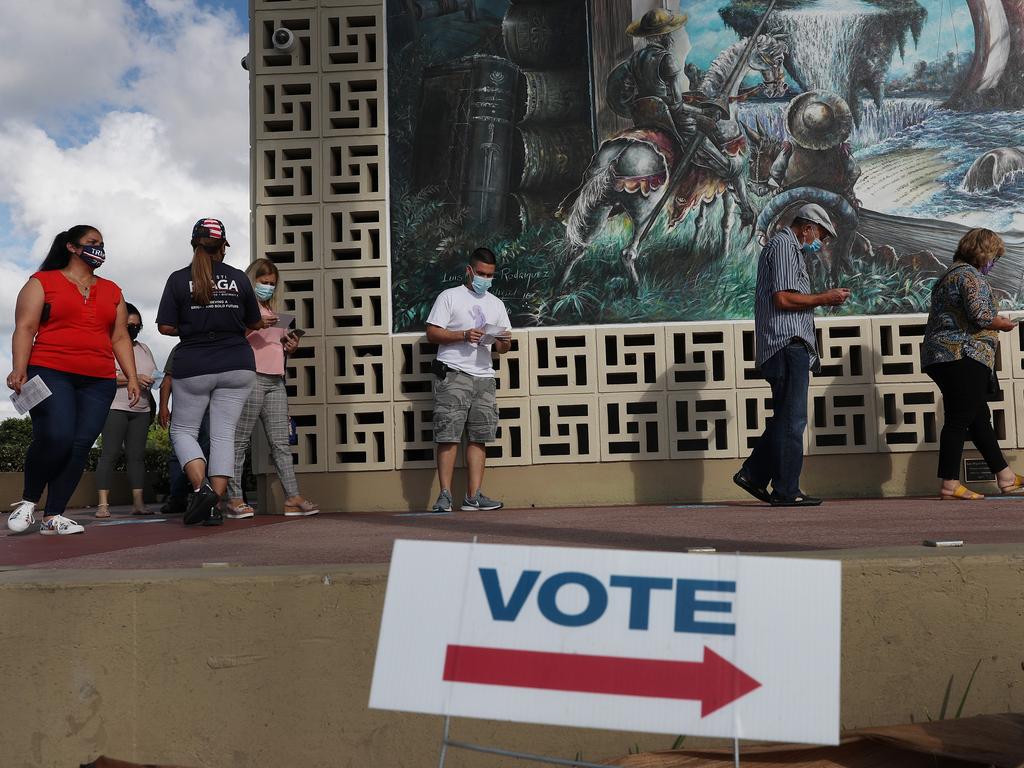
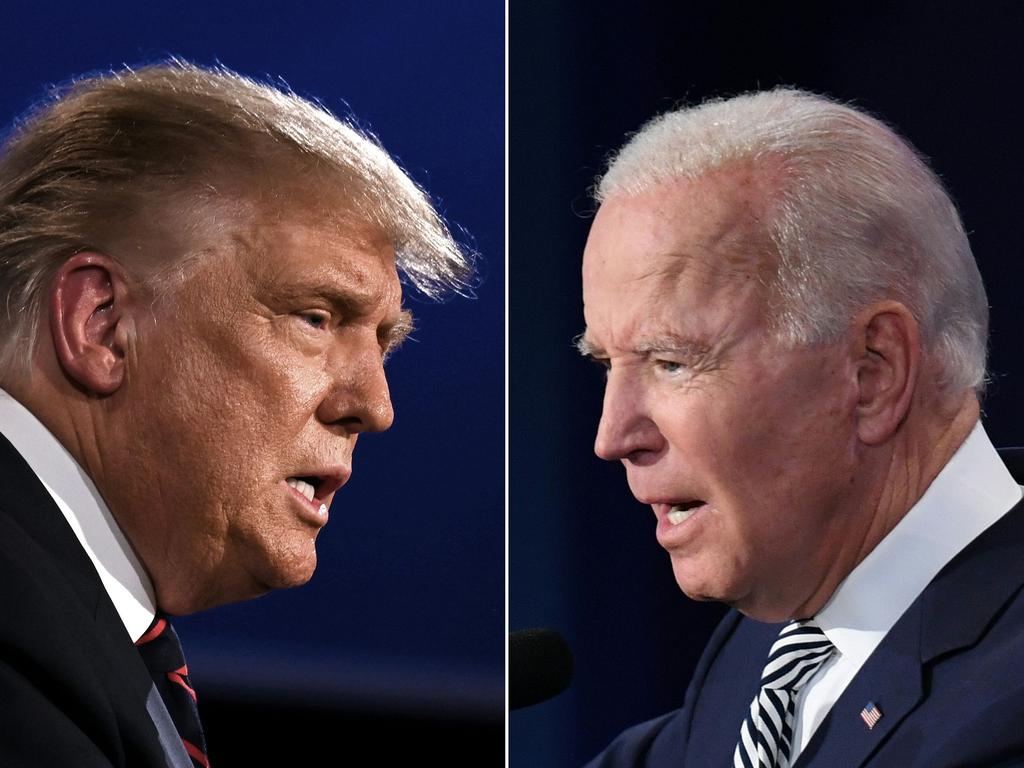
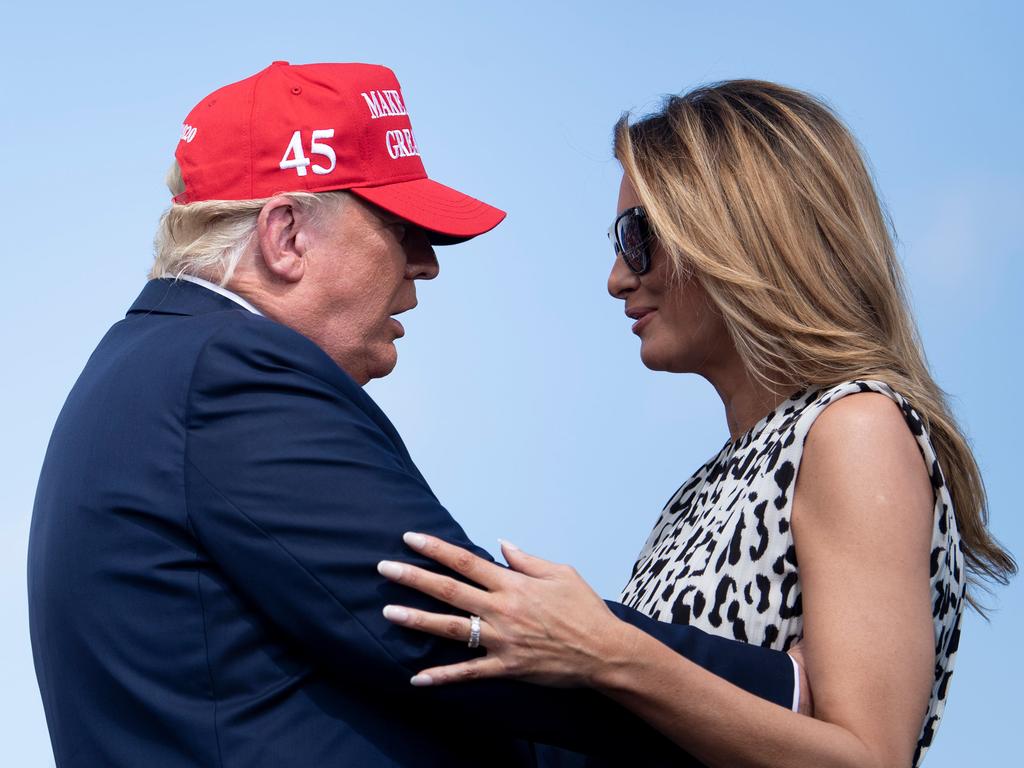

America is braced for an election like no other. The most mercurial and polarising president in living memory versus a contender who is past his prime, but who promises safe harbour in a storm.